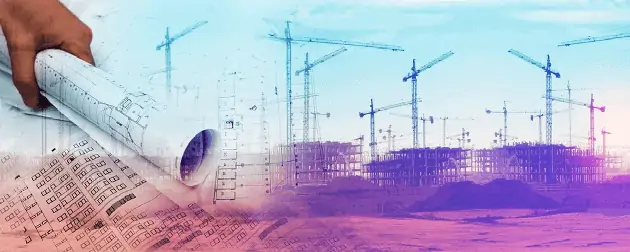The year 2020 has been a challenging one for all business sectors after being forced to adapt to survive the COVID-19 pandemic. The construction industry was no exception as contractors cannot deliver a project working from home. Remote collaboration systems helped the construction managers during planning and project approval. However, in the majority of the cases, the workers had to interact in person when the construction starts.
Adding to the pandemic, the US construction industry faced several additional challenges in 2021 like an increase in the price of key materials, higher unemployment rates, disruptions in projects like the harsh winter storms in February.
However, some engineering firms and contractors have adopted emerging technologies coupled with the March 10 COVID-19 relief package, which included funding and incentives, to thrive under unprecedented situations.
This article aims to discuss the main challenges and opportunities for US contractors in 2021.
Challenge #1 – Expensive Construction Materials
The lockdowns due to the pandemic caused major disruptions in the supply chains which resulted in increased prices of many construction materials. The 2 important materials that were affected the most were:
- 6% hike in prices of Iron and Steel between January 2000 and January 2021.
- 73% increased price of Softwood lumber for the same period as above.
House framing was majorly composed of lumber and the hike in lumber prices heavily impacted the residential sector. To get an idea, according to the National Association of Home Builders, a single-family home costs $16,000 more expensive now due to lumber prices alone.
On the other hand, the commercial sectors experienced a major impact due to hike iron and steel prices as reinforced concrete structures and steel structures were both dependent on iron and steel.
To survive in such situations, some companies have been hoarding materials to avoid additional expenses due to price spikes.
Challenge #2 – Higher Unemployment Rates
Depending on the severity of the COVID-19 outbreak, some states allowed only critical projects to continue while the rest were paused completely. This resulted in reduced revenue and demand for labor. In a matter of few months, thousands of construction workers lost their job.
To fight the higher unemployment rates, the industry recovered over 70% of jobs towards the end of 2020. However, February 2021 experienced a major layoff due to the harsh winter storms. The weather caused large-scale blackouts all over the US and disrupted the projects directly. According to a study by Associated Builders and Contractors, the industry lost 61,000 jobs in February alone.
On the brighter side, the short-term outlook looks promising as construction activities increase in summer, which will drive demand for workers. Also, the second COVID-19 relief package extended the employee retention tax credit into 2021, which offered companies a deduction of up to $10,000 in payroll tax per employee.
Opportunity #1 – Construction Incentives
The second COVID-19 relief bill has a total value of $1.9 trillion, and a part of that can be utilized for construction projects. Among the various sectors, the bill gives high priority to:
- Education ($125.8 billion)
- Federal Transit Administration ($30.5 billion)
- Restaurants ($25 billion)
- Healthcare ($8.5 billion)
- COVID-19 research centers ($1.8 billion)
- Tribal governments ($600 million)
The bill has also introduced $340 billion in recovery funds, which will be managed by the state and municipal governments. These funds can be used for various purposes which included construction. State governments will get $219.8 billion, while cities and counties will get $120.2 billion. The bill also created the Coronavirus Capital Projects Fund, with a value of $10 billion: each state will get $100 million, and the rest will be allocated based on demographics and population needs.
Opportunity #2 – Rise of ConTech
In the wake of adapting to emergency situations like COVID-19 and coming out stronger, companies started adopting technology like video-conference, cloud-based file sharing, work from home, etc. Similarly, contech is proving to be a promising field in the construction industry.
Technologies like wearable sensors can help keep workers safe on the job site, drones can be used to survey high-risk areas without human intervention, and many more. When it comes to contractors, they can rely on design engineers and use BIM software to optimize the use of construction materials and also rely on modular construction strategies to keep the workers safe and keep the project moving ahead at a faster pace.


